Miami Beach’s Rise to a Global Destination, Through the Eyes of Local Architect Kobi Karp
Kobi Karp, president and founder of Kobi Karp Architecture Interior Design, says Miami has evolved into a top global destination.
By Carl Juste
Read the article on Miami Herald
Since the late 1980s, architect Kobi Karp has seen Miami reinvent itself.
His projects have gone from renovating Art Deco gems such as the Astro and Edison hotels, to designing newcomers such as 1 Hotel South Beach, AC Hotel Miami Beach and the Hyatt Centric South Beach Miami. Coming up, he’ll lend his expertise to the new Hotel Palomar South Beach, a 96-room luxury boutique Kimpton property in Sunset Harbor.
Once known for restoring historic properties, Karp’s designs have changed along with the landscape.
“What I have seen is the same ideas, same concepts, reinventing themselves with the same DNA, [but] with greater technological design,” Karp said. “Greater, bigger, more rooms, more amenities, more technology.”
Israel-born, Minneapolis-bred Karp started off with resorts in the Caribbean and has now had a hand in dozens of hotels in Miami Beach. He opened his firm, Kobi Karp Architecture and Interior Design, where he is president along with wife Nancy Karp, who heads advertising and marketing, in 1995 with a focus on hospitality, mixed-use commercial, residential and multifamily properties.
Between Karp’s domestic and international projects — from the Gulf of Mexico to the Far East — the firm has amassed $36 billion in design work.
More change is expected, Karp said. He recently spoke to the Miami Herald about the changing dynamic of Miami Beach and its rise into a global hotspot.
Q. Your projects are usually inspired by the space they reside in, but Miami has changed immensely in recent years. How is Miami’s new identity reflected in your designs?
A. The identity of Miami is dynamic like our designs. It continuously changes to reflect the community and the society of which we are a part of. We, as architects, take the dynamic identity of Miami as inspiration for our designs. We believe that as artists, we are a reflection of our time and our society.
Q. What factors in Miami have led to a shift in the city’s perception as a more cultured destination?
A. Miami is a cultural and social hub due to the mix of people and cultures which exist and grow here from both domestic and international destinations. This has created a platform for a dynamic and varied cultural venue to thrive.
Q. As a result of the changes in Miami, the hotel market has become more saturated. Room supply has grown 4.4 percent over 2015. In a crowded field, do you try to create something that is filling some unaddressed need? How do you ensure your designs stand out?
A. As the hotel industry has grown over the past few years, there has been a vacuum and a demand which had to be filled. The increase in hotel rooms is only now catching up to the demand. Utilizing the local artistic and creative environment, both natural and man-made, we as designers have been standing out in our unique lifestyle-destination designs due to our artistic vision and cultural approach.
Q. What does the modern traveler to Miami expect to get now.
A. The modern traveler expects to get a unique experience upon arrival, an experience that educates and increases the understanding of the local, one-of-a-kind surroundings. They want a visit that is seeped in [the] architectural [and] cultural and an artistic and environmentally conscious and natural lifestyle. That makes their stay in Miami unlike anything else and one that becomes different from each previous stay, as well as a departure from where it is that they came from originally.
Q. How does the hotel industry keep up with the rise of the short-term rental industry?
A.Short-term rentals present a variety of experiences that most people do not appreciate. You generally do not know what it is that you will be getting. There is no way to find out what it is that you are actually purchasing until you get there. The concept of bed-and-breakfast and mom and pops putting up travelers in their homes has been in existence for hundreds of years. The hotel industry actually evolved and also grew from that original concept. The industry came about from creating unique and special environments with an expected level of standards in hospitality. This does not exist and will not exist under the short-term rental variety.
Q. Space for development on Miami Beach is getting tight. What do you see as the next hot spot? Which would you like to design for?
A. The next hotspot is around the Bass Museum and The Collins Park Historic District in Miami Beach. It is a hotbed of culture and cabaret, surrounding artistic and creative venues. You have the Bass Museum and the park opening directly to the ocean. You can visit a cabaret or maybe attend a polo match on the beach. You can stroll the Historic District or go to the museum or attend the ballet. We are currently finishing The Plymouth and Ansonia Hotels, The Collins Park Hotel which has 300 rooms, The Lenox Hotel and The 1 Hotel, which are all currently finishing or under construction.
Q. What can you tell us about your upcoming projects and how they will be different from Miami’s other offerings?
A. We have an upcoming project that will be designed as the creative and style flagship for the hospitality community. It will be the cutting edge in lifestyle hotels and resorts in Miami. It’s a project along the Miami River and it is the first project that turns the front yard towards the river, while still being inclusive of the residential, hotel, commercial retail and public areas already on the riverfront. The existing streets, along with a new street that will be added in the middle as a paseo street, will highlight the riverfront. The design and architecture is comprised of steel with industrial detailing and curvilinear and nautical streamline edges. This is all in an effort to be reflective of the river bending, highlighting the ships and boats as they travel along the river. It really will be something special.
Job title: President of Kobi Karp Architecture and Interior Design
Age: 53
Experience: Extensive experience as a registered architect in the U.S. for 28 years. Karp opened his Miami firm in 1995, and has worked on projects that range from the renovation of the Astor and Edison hotels, to, more recently, the designs of the 1 Hotel South Beach, Thompson Miami Beach (now The Confidant), AC Hotel Miami Beach and Hyatt Centric South Beach Miami.
Education: Dual bachelor’s degrees in architecture and environmental design from the Institute of Technology at the University of Minnesota.
Personal: Married 23 years to wife Nancy. Has two sons, Jordan, 20, and Aden, 14.
About Kobi Karp Architecture and Interior Design: For over two decades, Kobi Karp Architecture and Interior Design has designed for clients internationally and domestically in hospitality, retail and residential developments. To date, the firm has designed more than $36 billion in mixed-use commercial, residential and multifamily properties, domestically and worldwide from the Caribbean, to the Far East, to the Black Sea region and throughout the Gulf and the Middle East.
Website: www.kobikarp.com
Source : https://www.miamiherald.com/news/business/biz-monday/article115824358.html

